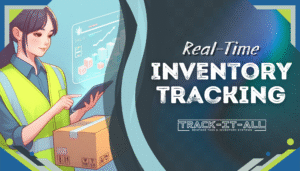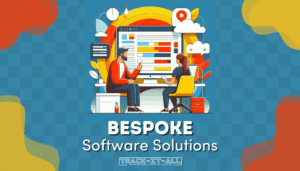Starting with the big picture, we see that technology can change how businesses work. At Track It All, we’ve learned that a well-planned ERP can make things more efficient and help make better decisions with data. But, getting there means tackling the big challenges that come with new tech.
Our team has found that overcoming hurdles is key to success. For example, some workers might not want to change from what they’re used to. It’s also vital to train everyone in Agile methods. And, moving from small projects to big ones can be tough due to things like not having enough resources.
To get past these issues, we follow a clear plan. At Track It All, we push for a culture that welcomes change and links new tech with business goals. Using tools like staffing management software helps make things run smoother and boosts team performance. Check out this article to see how automation can help in South Africa. In addition, we also prioritize ongoing training and development for our staff to ensure they are equipped with the latest skills and knowledge. This enables them to adapt to new technologies and processes more effectively. As a further step, we have recently implemented free project management software to streamline our operations and drive efficiency across all departments. This has enabled better collaboration and communication within our teams, ultimately leading to improved project delivery and client satisfaction.
successful project implementation
Key Takeaways
- Recognise and address resistance to change among employees early on.
- Ensure proper Agile training for team members to enhance expertise and alignment.
- Maintain consistency and scalability when transitioning from small to large-scale projects.
- Utilize staffing management software to streamline operations and improve efficiency.
- Engage in proactive planning and adaptive strategies to navigate implementation challenges.
Aligning Stakeholders for Seamless Project Implementation
Track It All leads the way in making sure stakeholders are on the same page from the start. It’s key to talk early and clearly to avoid problems and surprises later on. We work on building a common understanding of what the project aims to achieve and how it will be done.

Early and Clear Communication
Talking to stakeholders well is vital for a project’s success. By talking to project sponsors, team members, customers, vendors, and agencies early, we build a united team. Everyone gets the project’s goals, aims, and timeline, cutting down on misunderstandings and making things run smoothly.
Regular Updates and Feedback Sessions
Keeping stakeholders updated with regular news and feedback is key. Being open and keeping in touch builds trust and gets people on board with decisions. This helps in tackling problems quickly and keeps everyone aligned.
Feedback sessions help us make sure stakeholders’ needs are met and changes are dealt with fast. Tools like Track It All make giving updates easy and clear.
Unified Communication and Documentation
Good communication and detailed records are vital for a project’s success. Using emails, calls, and meetings helps us talk to different people in the best way. Keeping track of what we talk about helps us make better decisions and stay on the same page.
Getting employees, customers, and suppliers involved in decisions brings new ideas and improves strategies. This way, we make sure we don’t miss important points, leading to better projects.
Tools like requirement traceability matrices and stakeholder analysis help keep everything clear and in order. This careful planning makes sure we consider everyone’s needs. It creates a space where new ideas and best practices can grow, boosting business performance.
- Effective stakeholder communication
- Continuous feedback sessions
- Unified documentation
| Benefits of Stakeholder Alignment | Strategies |
|---|---|
| Enhanced business performance | Early and clear communication |
| Improved operational efficiency | Regular updates and feedback sessions |
| Stakeholder buy-in and support | Unified communication and documentation |
Overcoming Implementation Challenges with Robust Strategies
At Track It All, we know that overcoming implementation challenges is key to success. A strong strategy, focusing on change management and employee engagement, is essential. Many organisations struggle with resistance to change, which often leads to nearly 70% of change efforts failing. Our strategy aims to reduce this by promoting transparency and inclusivity.
Change Management and Employee Engagement
Effective change management and high employee engagement are vital in our implementation strategies. We focus on training and workshops that make new processes engaging and reassuring. Keeping everyone informed and involved helps reduce resistance and builds employee ownership. This method is backed by research showing that good communication boosts strategy success by 50%.
Adopting Agile Methodologies
Using agile methodologies helps us quickly adapt to challenges. Agile promotes making progress in steps, listening to feedback, and being flexible. This is great for dealing with limited resources and adjusting goals as needed. Since 60% of companies struggle with resource issues, agile methods keep us flexible and on track.
Risk Assessment and Mitigation
Systematic risk assessment and mitigation are key to overcoming challenges. Identifying risks early, like market changes or resource shortages, lets us plan ahead. Regular checks and adjustments help us avoid obstacles. This approach matches data showing that constant strategy monitoring boosts success by 15%.
| Challenge | Statistics | Strategy |
|---|---|---|
| Resistance to Change | 70% failure rate | Inclusive planning and regular communication |
| Resource Constraints | 60% hinderance | Agility and adaptive resource allocation |
| Poor Alignment | 40% productivity decrease | Cross-departmental coordination |
| Lack of Accountability | 25% increase in missed deadlines | Clear accountability structures |

Conclusion
Track It All is on a mission to tackle project challenges head-on. We believe that finishing a project well takes hard work, team commitment, and looking at everything that can be improved. Facing project issues means having a strong plan and being ready to change it when needed.
Dealing with resistance from middle management is a big problem. They worry about losing control and don’t like the unknown. So, we make sure to talk to them early and teach them about SAFe. This helps everyone work together better and stops teams from doing the same thing twice.
Using Agile Release Trains (ARTs) helps teams work better together and get things done faster. At Track It All, we’ve trained over 2000 staff and held more than 50 webinars. These efforts help teams adjust to new ways of working smoothly. With ongoing support and teamwork, we aim for a big change in our organisation.







